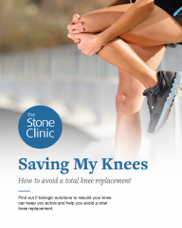Posterolateral corner injury
The posterolateral corner is comprised of a collection of bones, ligaments, tendons, and muscles in the back (posterior), outside (lateral) corner of the knee. These structures have been shown to work together to stabilize the knee and prevent varus (bowlegged), external rotation (motion away from the center of the body).
Injury
Injuries to the posterolateral corner of the knee joint often occur with ACL ruptures and PCL ruptures. Unfortunately, the injury to the corner of the knee is often missed on the physical examination and even on the MRI. The posterolateral corner injury results in increased rotation of the tibia. Therefore, when an ACL or PCL is reconstructed and the posterolateral corner is not reconstructed, abnormal rotational forces cause the ACL or PCL reconstruction to sometimes fail early.
Surgical technique
The posterolateral corner can be rebuilt with donor tissue by passing a tunnel through the proximal fibular head, underneath the tibial band, and into the insertion just slightly superior to the popliteus and lateral collateral ligament insertion, slightly below Blumensaat’s line on the lateral aspect of the femur. This surgical technique is performed as an outpatient procedure, and we usually do it in combination with ACL reconstruction or PCL reconstruction for the patients who have posterolateral corner instability. The rehabilitation of the posterolateral corner reconstruction follows a very specific plan.
After undergoing a reconstruction of the posterolateral corner of the knee, a customized rehabilitation program is undertaken starting on the first day after surgery.


